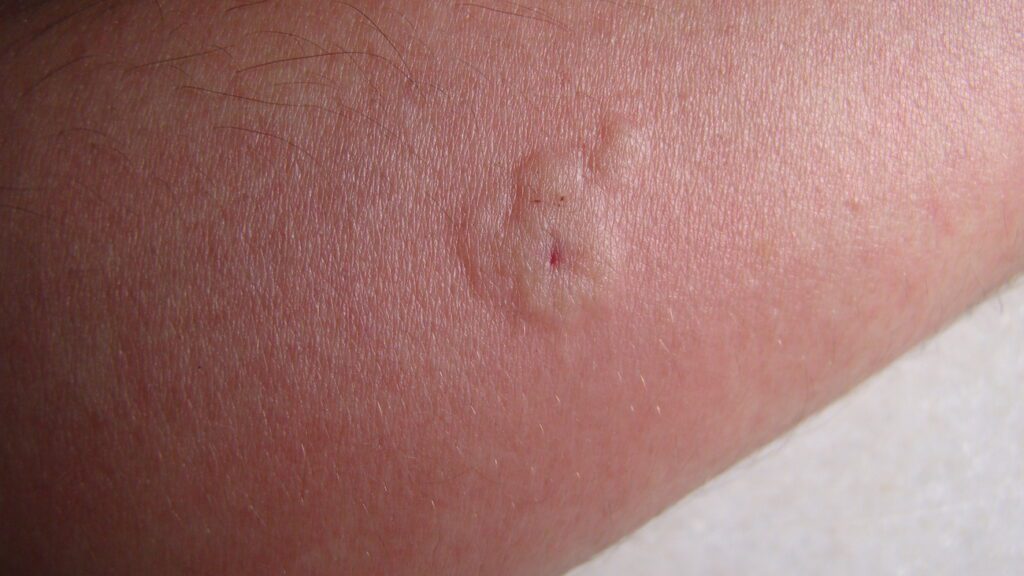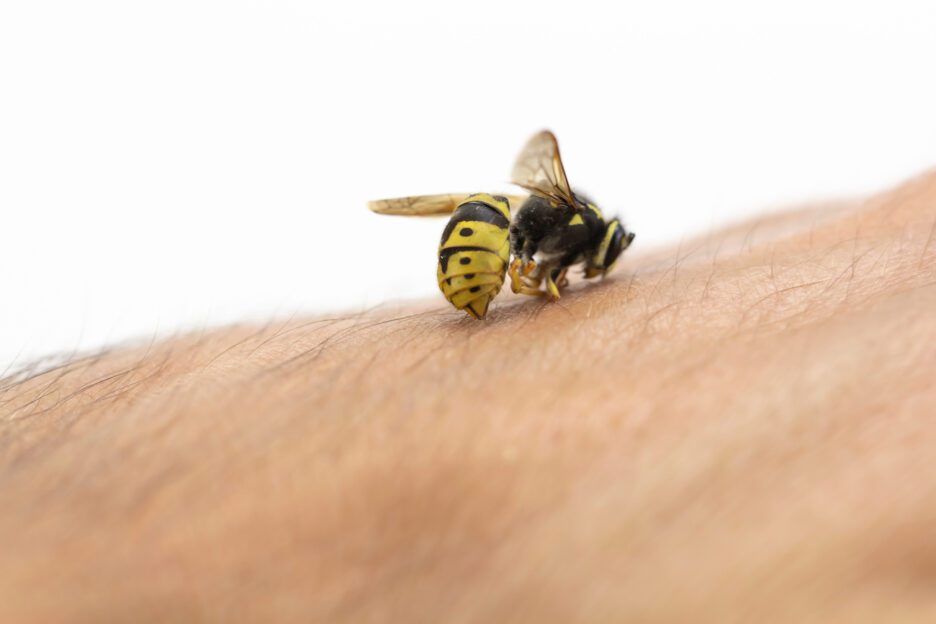Bee stings are a common outdoor hazard, especially during warmer months. While most stings cause only mild discomfort, it’s helpful to understand how to respond, what type of bees may sting and why stings occur.
Types of Bees That Sting
The most common bees that sting include honey bees, bumblebees and Africanized honey bees. Honey bees have barbed stingers that remain in the skin after a sting. Once a honey bee stings, it cannot remove the stinger and dies shortly afterward. Bumblebees and Africanized honey bees, on the other hand, have smooth stingers and can sting multiple times. Africanized honey bees, sometimes called “killer bees,” are known for their defensive swarming behavior.
Why Bees Sting
Bees typically sting as a defensive action. Bees sting to protect their hive, themselves or their queen. Most bees are not aggressive by nature and will only sting if they feel threatened or are provoked. Understanding this behavior can help reduce the risk of being stung.

What to Do Immediately After a Bee Sting
If stung by a bee, the first step is to remove the stinger quickly, if it’s still visible. The best method is to scrape it out with the edge of a credit card or a fingernail. Avoid using tweezers, as squeezing the stinger may inject more venom.
Next, wash the area with soap and water to clean the wound. Apply a cold compress or ice pack to reduce swelling and pain. Over-the-counter antihistamines can help relieve itching and swelling, while pain relievers like ibuprofen or acetaminophen may ease discomfort. Avoid scratching the area to prevent infection.
When to Seek Medical Help
In most cases, bee stings cause mild swelling, redness and pain. But if a person experiences difficulty breathing, swelling of the face or throat, dizziness or nausea, it could indicate a severe allergic reaction called anaphylaxis. In such cases, emergency medical attention is necessary.
Bee Safety Around the Home
To reduce the chance of bee stings, avoid wearing bright colors or scented products outdoors. Be cautious near flowering plants and keep food and sugary drinks covered. If bee activity is a concern around your home in Idaho and the Teton Valley area, contact Double Diamond Pest Management to assess and manage the situation safely.


